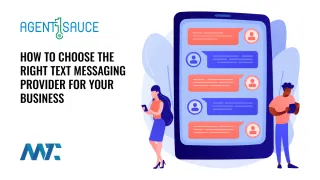10DLC is a messaging standard that allows businesses to send Application-to-Person (A2P) text messages using a traditional 10-digit phone number. The term 10-Digit Long Code refers to a local area code and phone number format (such as 317-555-1234) that customers easily recognize.
In the past, businesses wanting to send SMS at scale faced trade-offs between using short codes (5-6 digit numbers designed for high-volume messaging but costly) or unregistered long codes (regular phone numbers with low throughput and a higher risk of being flagged as spam). The introduction of 10DLC created a framework where businesses can use local phone numbers for bulk messaging in a compliant and carrier-approved way.
Mobile carriers in the United States — including AT&T, Verizon, and T-Mobile — developed the 10DLC standard to support business messaging while protecting consumers from spam and fraud. To send messages via 10DLC, businesses must register their brand and use case with The Campaign Registry (TCR), a centralized industry database.
Once registered, a business is assigned a trust score based on the quality and accuracy of its registration. This score influences message delivery rates, throughput limits (how many messages can be sent per second), and the likelihood of successful delivery without carrier filtering.
10DLC is primarily used for customer engagement campaigns such as appointment reminders, delivery notifications, customer support messaging, loyalty programs, and promotional marketing. It provides businesses a cost-effective and trusted channel to communicate directly with their audience via text messaging.
Key benefits of 10DLC include local phone number recognition, better deliverability, higher throughput compared to traditional long codes, and regulatory compliance for A2P messaging in the United States.
